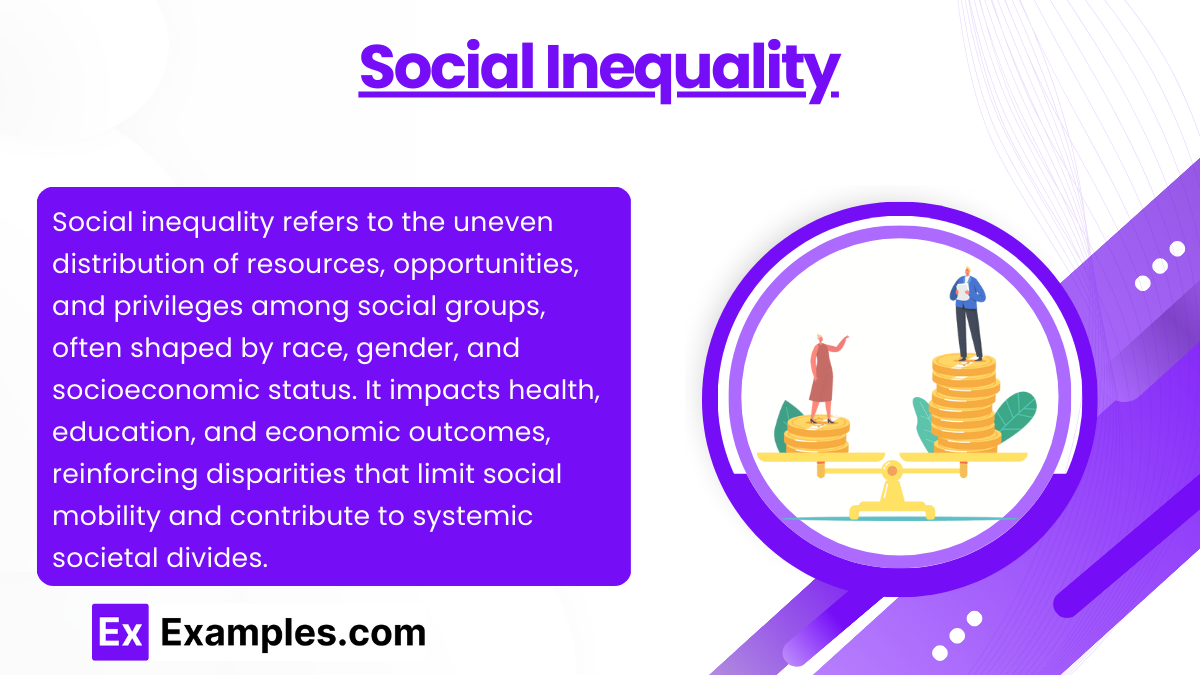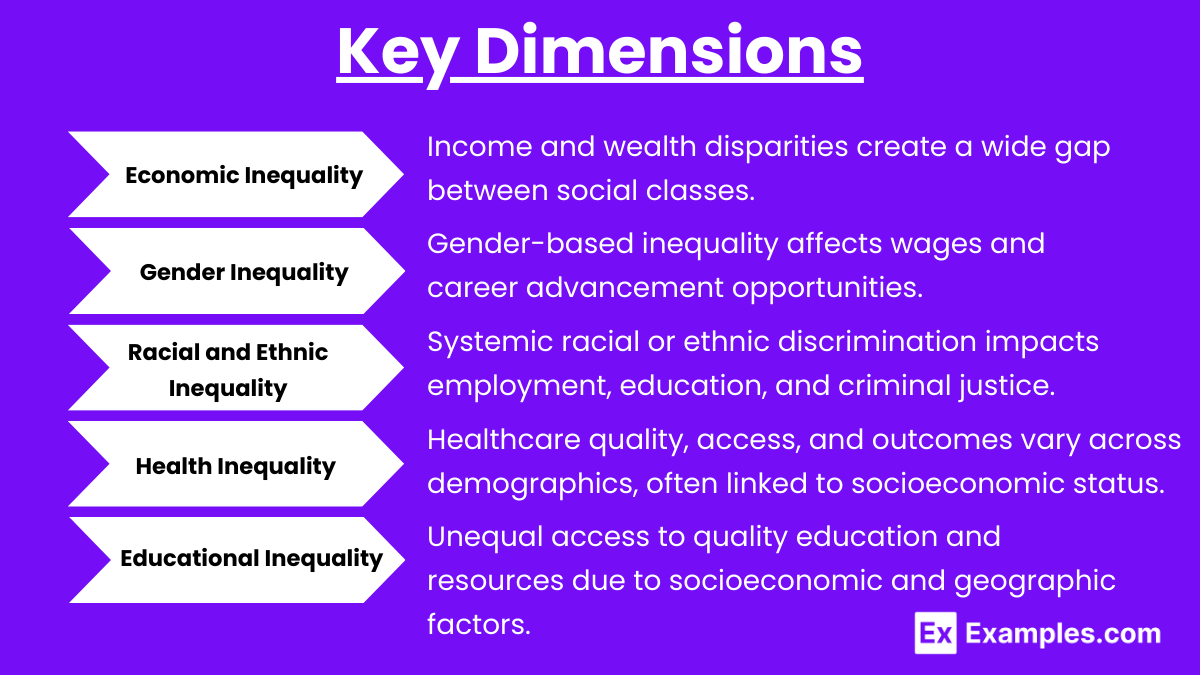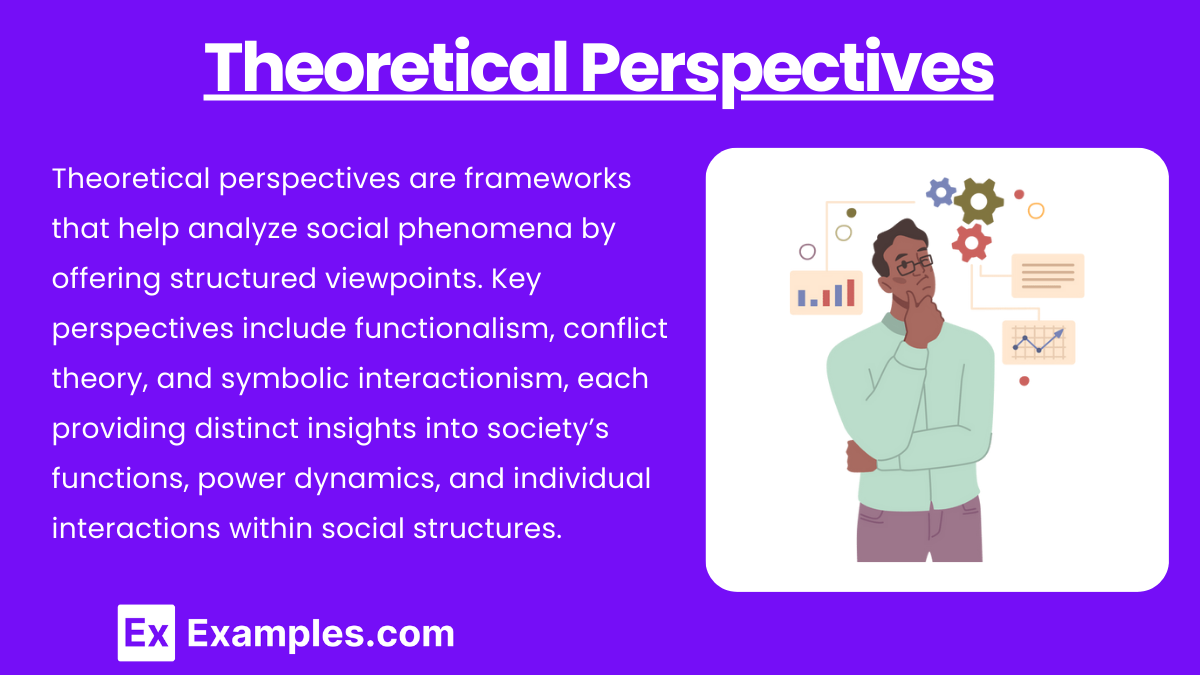Social Inequality

- Notes
Preparing for the MCAT requires a comprehensive understanding of social inequality, an essential concept within the social sciences. Understanding the various dimensions of social inequality, including economic, gender, racial, health, and educational disparities, equips you with critical insights into how societal structures impact individuals and communities. Mastering this topic is vital for excelling on the MCAT, as it allows you to analyze the complex interplay between social determinants and health outcomes, which is crucial for a well-rounded approach to healthcare.
Learning Objective
In studying Social Inequality for the MCAT, you should develop an understanding of the factors contributing to disparities in resources, opportunities, and privileges across different social groups. Explore dimensions such as economic, racial, gender, health, and educational inequalities, and examine how these disparities influence individual health outcomes, access to healthcare, and social mobility. Evaluate how structural and systemic inequalities are perpetuated through institutions, policies, and social norms. Additionally, understand how social inequality impacts mental and physical health, quality of life, and overall societal stability. Apply this knowledge to interpret data on social determinants of health and solve MCAT practice questions on the implications of social inequality for individual and community well-being.”
1. Social Inequality

Social inequality is the uneven distribution of resources, opportunities, and privileges among social groups. It creates disparities that affect access to education, healthcare, and economic stability, often based on characteristics like socioeconomic status, race, and gender. This leads to a stratified society where certain groups face barriers to upward mobility, directly impacting life quality and social harmony.
2. Key Dimensions

- Economic Inequality: Disparities in income and wealth distribution, often leading to a significant gap between social classes.
- Gender Inequality: Unequal treatment and opportunities for individuals based on gender, visible in wage gaps and career advancement challenges.
- Racial and Ethnic Inequality: Systemic discrimination based on race or ethnicity affecting employment, education, and criminal justice.
- Health Inequality: Differences in healthcare quality, access, and outcomes across demographics, often tied to socioeconomic status.
- Educational Inequality: Uneven access to quality education and resources based on factors like socioeconomic background and geography.
3. Theoretical Perspectives

- Functionalism: Posits that inequality is necessary for social stability, as it ensures that roles are filled according to ability and motivation, rewarding those in critical roles.
- Conflict Theory: Views inequality as a result of power imbalances where dominant groups maintain control over resources, creating social hierarchies that favor them.
- Symbolic Interactionism: Focuses on everyday social interactions, where stereotypes and biases reinforce inequalities, impacting perceptions and social roles.
4. Impact & Solutions

Solutions: Addressing social inequality involves policies like education reform, access to affordable healthcare, income redistribution through taxation, and enforcing anti-discrimination laws to create equal opportunities.
Impact: Inequality contributes to poor health outcomes, limited educational achievement, economic instability, and increased social conflict.
Examples
Example 1: Socioeconomic Inequality and Health Outcomes
People from lower socioeconomic backgrounds often have limited access to healthcare, leading to higher incidences of chronic diseases and lower life expectancy. This disparity impacts overall public health and highlights the link between wealth and wellness.
Example 2: Gender Pay Gap in the Workforce
In many industries, women are paid less than men for the same work. This income disparity limits financial independence and affects career advancement opportunities, reinforcing gender inequality in society.
Example 3: Educational Disparities Based on Neighborhoods
Schools in wealthier neighborhoods often receive more funding, resulting in better facilities and resources. In contrast, schools in underfunded areas face challenges like outdated textbooks and overcrowded classrooms, which hinder student success and perpetuate educational inequality.
Example 4: Racial Disparities in the Criminal Justice System
Minority groups are disproportionately affected by higher arrest rates and harsher sentencing, even for similar offenses. This unequal treatment perpetuates racial inequality and has long-term effects on communities of color.
Example 5: Housing Inequality and Redlining
Historically, redlining practices restricted minority groups from purchasing homes in certain neighborhoods. This not only limited wealth-building opportunities through property ownership but also reinforced segregated communities and inequality in housing access.
Practice Questions
Question 1:
Which of the following best illustrates the impact of social inequality on health outcomes?
A) High-income communities having lower rates of chronic illness
B) Equal healthcare access across all neighborhoods
C) Higher levels of education leading to more health-conscious behavior
D) Employment opportunities based on merit alone
Answer: A) High-income communities having lower rates of chronic illness
Explanation:
Health outcomes are often closely tied to income levels, with high-income communities having greater access to quality healthcare, healthier lifestyles, and lower rates of chronic illness. This exemplifies how socioeconomic factors influence health.
Question 2:
How does the gender pay gap contribute to social inequality?
A) By creating equal economic opportunities for all genders
B) By limiting women’s financial independence and career advancement
C) By providing women with higher-paying jobs than men
D) By promoting gender balance in the workforce
Answer: B) By limiting women’s financial independence and career advancement
Explanation:
The gender pay gap contributes to social inequality by disadvantaging women economically, which can affect their long-term financial stability, career opportunities, and overall equality in the workforce.
Question 3:
Redlining primarily affects social inequality by:
A) Providing equal housing opportunities for all racial groups
B) Increasing minority access to prime neighborhoods
C) Restricting minority access to housing and wealth-building opportunities
D) Promoting racial integration in all neighborhoods
Answer: C) Restricting minority access to housing and wealth-building opportunities
Explanation:
Redlining practices historically limited minority groups’ access to certain neighborhoods, hindering their ability to build wealth through property ownership. This has had lasting effects on social inequality, particularly in housing and economic mobility.
Preparing for the MCAT requires a comprehensive understanding of social inequality, an essential concept within the social sciences. Understanding the various dimensions of social inequality, including economic, gender, racial, health, and educational disparities, equips you with critical insights into how societal structures impact individuals and communities. Mastering this topic is vital for excelling on the MCAT, as it allows you to analyze the complex interplay between social determinants and health outcomes, which is crucial for a well-rounded approach to healthcare.
Learning Objective
In studying Social Inequality for the MCAT, you should develop an understanding of the factors contributing to disparities in resources, opportunities, and privileges across different social groups. Explore dimensions such as economic, racial, gender, health, and educational inequalities, and examine how these disparities influence individual health outcomes, access to healthcare, and social mobility. Evaluate how structural and systemic inequalities are perpetuated through institutions, policies, and social norms. Additionally, understand how social inequality impacts mental and physical health, quality of life, and overall societal stability. Apply this knowledge to interpret data on social determinants of health and solve MCAT practice questions on the implications of social inequality for individual and community well-being."
1. Social Inequality

Social inequality is the uneven distribution of resources, opportunities, and privileges among social groups. It creates disparities that affect access to education, healthcare, and economic stability, often based on characteristics like socioeconomic status, race, and gender. This leads to a stratified society where certain groups face barriers to upward mobility, directly impacting life quality and social harmony.
2. Key Dimensions

Economic Inequality: Disparities in income and wealth distribution, often leading to a significant gap between social classes.
Gender Inequality: Unequal treatment and opportunities for individuals based on gender, visible in wage gaps and career advancement challenges.
Racial and Ethnic Inequality: Systemic discrimination based on race or ethnicity affecting employment, education, and criminal justice.
Health Inequality: Differences in healthcare quality, access, and outcomes across demographics, often tied to socioeconomic status.
Educational Inequality: Uneven access to quality education and resources based on factors like socioeconomic background and geography.
3. Theoretical Perspectives

Functionalism: Posits that inequality is necessary for social stability, as it ensures that roles are filled according to ability and motivation, rewarding those in critical roles.
Conflict Theory: Views inequality as a result of power imbalances where dominant groups maintain control over resources, creating social hierarchies that favor them.
Symbolic Interactionism: Focuses on everyday social interactions, where stereotypes and biases reinforce inequalities, impacting perceptions and social roles.
4. Impact & Solutions

Solutions: Addressing social inequality involves policies like education reform, access to affordable healthcare, income redistribution through taxation, and enforcing anti-discrimination laws to create equal opportunities.
Impact: Inequality contributes to poor health outcomes, limited educational achievement, economic instability, and increased social conflict.
Examples
Example 1: Socioeconomic Inequality and Health Outcomes
People from lower socioeconomic backgrounds often have limited access to healthcare, leading to higher incidences of chronic diseases and lower life expectancy. This disparity impacts overall public health and highlights the link between wealth and wellness.
Example 2: Gender Pay Gap in the Workforce
In many industries, women are paid less than men for the same work. This income disparity limits financial independence and affects career advancement opportunities, reinforcing gender inequality in society.
Example 3: Educational Disparities Based on Neighborhoods
Schools in wealthier neighborhoods often receive more funding, resulting in better facilities and resources. In contrast, schools in underfunded areas face challenges like outdated textbooks and overcrowded classrooms, which hinder student success and perpetuate educational inequality.
Example 4: Racial Disparities in the Criminal Justice System
Minority groups are disproportionately affected by higher arrest rates and harsher sentencing, even for similar offenses. This unequal treatment perpetuates racial inequality and has long-term effects on communities of color.
Example 5: Housing Inequality and Redlining
Historically, redlining practices restricted minority groups from purchasing homes in certain neighborhoods. This not only limited wealth-building opportunities through property ownership but also reinforced segregated communities and inequality in housing access.
Practice Questions
Question 1:
Which of the following best illustrates the impact of social inequality on health outcomes?
A) High-income communities having lower rates of chronic illness
B) Equal healthcare access across all neighborhoods
C) Higher levels of education leading to more health-conscious behavior
D) Employment opportunities based on merit alone
Answer: A) High-income communities having lower rates of chronic illness
Explanation:
Health outcomes are often closely tied to income levels, with high-income communities having greater access to quality healthcare, healthier lifestyles, and lower rates of chronic illness. This exemplifies how socioeconomic factors influence health.
Question 2:
How does the gender pay gap contribute to social inequality?
A) By creating equal economic opportunities for all genders
B) By limiting women's financial independence and career advancement
C) By providing women with higher-paying jobs than men
D) By promoting gender balance in the workforce
Answer: B) By limiting women's financial independence and career advancement
Explanation:
The gender pay gap contributes to social inequality by disadvantaging women economically, which can affect their long-term financial stability, career opportunities, and overall equality in the workforce.
Question 3:
Redlining primarily affects social inequality by:
A) Providing equal housing opportunities for all racial groups
B) Increasing minority access to prime neighborhoods
C) Restricting minority access to housing and wealth-building opportunities
D) Promoting racial integration in all neighborhoods
Answer: C) Restricting minority access to housing and wealth-building opportunities
Explanation:
Redlining practices historically limited minority groups’ access to certain neighborhoods, hindering their ability to build wealth through property ownership. This has had lasting effects on social inequality, particularly in housing and economic mobility.

